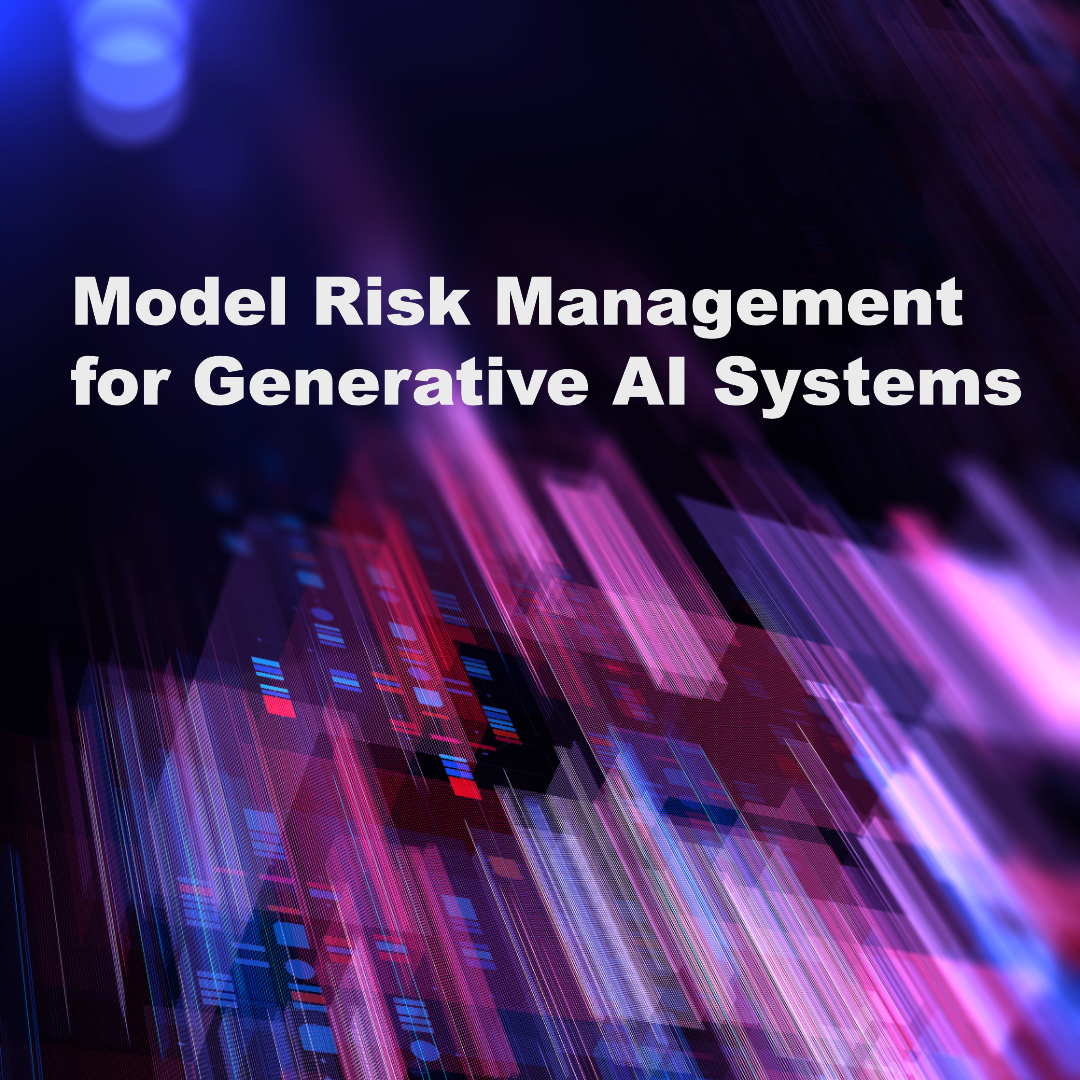Generative AI systems, powered by models like GPT, DALL-E, and Stable Diffusion, are revolutionizing industries, enabling innovative solutions in content creation, customer service, design, and more. However, the rapid adoption of these systems brings new risks and challenges, necessitating robust model risk management (MRM) practices. Below, we explore practical steps to manage risks in generative AI systems effectively.
Understanding Model Risk in Generative AI
Model risk arises when AI systems produce incorrect, biased, or unintended outputs that lead to operational, reputational, or regulatory harm. Generative AI systems, given their complexity and training on vast datasets, are particularly vulnerable to:
- Bias and Fairness Issues: Models may replicate or amplify biases present in training data.
- Hallucinations: Generating factually incorrect or nonsensical outputs.
- Intellectual Property Violations: Producing content that infringes copyrights or other IP rights.
- Security Risks: Susceptibility to adversarial attacks or data leakage.
- Regulatory Non-compliance: Violating data protection laws or ethical standards.
Effective MRM frameworks ensure these risks are identified, assessed, mitigated, and monitored throughout the AI lifecycle.
Practical Steps for Model Risk Management
1. Establish Governance Structures
- Define Accountability: Assign clear roles for oversight, including a Model Risk Officer or AI Governance Committee.
- Develop Policies: Create AI-specific MRM policies aligned with organizational and regulatory standards.
- Ensure Cross-functional Collaboration: Involve teams from data science, legal, compliance, and business units.
2. Conduct Comprehensive Risk Assessments
- Model Development Phase: Assess risks related to data quality, training methods, and initial outputs.
- Deployment Phase: Evaluate operational risks, including potential misuse and output monitoring.
- Post-deployment Monitoring: Continuously track performance and emerging risks.
3. Ensure Data Transparency and Integrity
- Data Provenance: Maintain detailed records of data sources used for training and fine-tuning.
- Bias Audits: Perform regular audits to identify and mitigate biases in training datasets.
- Synthetic Data Use: Where feasible, employ synthetic or anonymized data to minimize risks related to privacy.
4. Build Robust Validation and Testing Frameworks
- Pre-deployment Validation: Test models against predefined benchmarks for accuracy, fairness, and robustness.
- Stress Testing: Simulate adverse scenarios to understand model behavior under extreme conditions.
- Adversarial Testing: Identify vulnerabilities through simulated attacks.
5. Implement Ethical and Legal Safeguards
- Ethical Reviews: Incorporate ethics committees to review potential societal impacts of AI applications.
- Regulatory Compliance: Stay updated on AI-specific regulations, such as the EU AI Act or local data protection laws.
- IP Protections: Ensure outputs adhere to intellectual property and copyright laws.
6. Enable Continuous Monitoring and Feedback Loops
- Real-time Monitoring: Use automated tools to track model performance and flag anomalies.
- User Feedback Integration: Collect feedback from end-users to identify unintended outputs or failures.
- Lifecycle Reviews: Regularly update models to address changing risks and operational contexts.
7. Leverage Explainability and Transparency Tools
- Explainable AI (XAI): Implement tools that offer insights into how and why models generate outputs.
- Documentation: Maintain thorough documentation covering model design, assumptions, and limitations.
- Transparency Portals: Share model capabilities and limitations with stakeholders.
8. Invest in Training and Awareness
- Stakeholder Education: Train teams to understand generative AI risks and mitigation strategies.
- Ethical Awareness: Promote awareness of ethical considerations in AI development and deployment.
- Scenario Planning: Conduct workshops to prepare for potential risk scenarios.
The Path Forward
Generative AI holds immense potential, but its adoption must be balanced with a commitment to responsible use. Model risk management is not a one-time activity but an ongoing process requiring vigilance, adaptability, and collaboration. By implementing these practical steps, organizations can harness the power of generative AI while minimizing risks and maintaining trust with stakeholders.
Asteriqx Consulting Services
At ASTERIQX Consulting, we recognize Generative AI as a groundbreaking innovation with the potential to redefine industries. However, this transformative technology introduces unique risks that demand an evolution in model risk practices. Our approach is to empower organizations to harness the benefits of generative AI responsibly through expert guidance and comprehensive governance solutions.
For expert guidance in establishing and managing AI model governance frameworks, explore Asteriqx Consulting’s Model Governance Services.
Empower your organization to lead responsibly in the AI era
Contact ASTERIQX Consulting to learn how we can help you adopt govern model risk in generative AI models that align with your ethical, regulatory, and business objectives.

